Yuzhou Zhang
Data-driven solar forecasting enables near-optimal economic decisions
Sep 08, 2025Abstract:Solar energy adoption is critical to achieving net-zero emissions. However, it remains difficult for many industrial and commercial actors to decide on whether they should adopt distributed solar-battery systems, which is largely due to the unavailability of fast, low-cost, and high-resolution irradiance forecasts. Here, we present SunCastNet, a lightweight data-driven forecasting system that provides 0.05$^\circ$, 10-minute resolution predictions of surface solar radiation downwards (SSRD) up to 7 days ahead. SunCastNet, coupled with reinforcement learning (RL) for battery scheduling, reduces operational regret by 76--93\% compared to robust decision making (RDM). In 25-year investment backtests, it enables up to five of ten high-emitting industrial sectors per region to cross the commercial viability threshold of 12\% Internal Rate of Return (IRR). These results show that high-resolution, long-horizon solar forecasts can directly translate into measurable economic gains, supporting near-optimal energy operations and accelerating renewable deployment.
A Novel Diffusion Model for Pairwise Geoscience Data Generation with Unbalanced Training Dataset
Jan 01, 2025



Abstract:Recently, the advent of generative AI technologies has made transformational impacts on our daily lives, yet its application in scientific applications remains in its early stages. Data scarcity is a major, well-known barrier in data-driven scientific computing, so physics-guided generative AI holds significant promise. In scientific computing, most tasks study the conversion of multiple data modalities to describe physical phenomena, for example, spatial and waveform in seismic imaging, time and frequency in signal processing, and temporal and spectral in climate modeling; as such, multi-modal pairwise data generation is highly required instead of single-modal data generation, which is usually used in natural images (e.g., faces, scenery). Moreover, in real-world applications, the unbalance of available data in terms of modalities commonly exists; for example, the spatial data (i.e., velocity maps) in seismic imaging can be easily simulated, but real-world seismic waveform is largely lacking. While the most recent efforts enable the powerful diffusion model to generate multi-modal data, how to leverage the unbalanced available data is still unclear. In this work, we use seismic imaging in subsurface geophysics as a vehicle to present ``UB-Diff'', a novel diffusion model for multi-modal paired scientific data generation. One major innovation is a one-in-two-out encoder-decoder network structure, which can ensure pairwise data is obtained from a co-latent representation. Then, the co-latent representation will be used by the diffusion process for pairwise data generation. Experimental results on the OpenFWI dataset show that UB-Diff significantly outperforms existing techniques in terms of Fr\'{e}chet Inception Distance (FID) score and pairwise evaluation, indicating the generation of reliable and useful multi-modal pairwise data.
Precision Glass Thermoforming Assisted by Neural Networks
Nov 11, 2024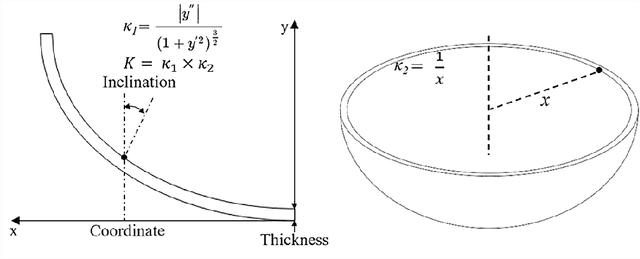
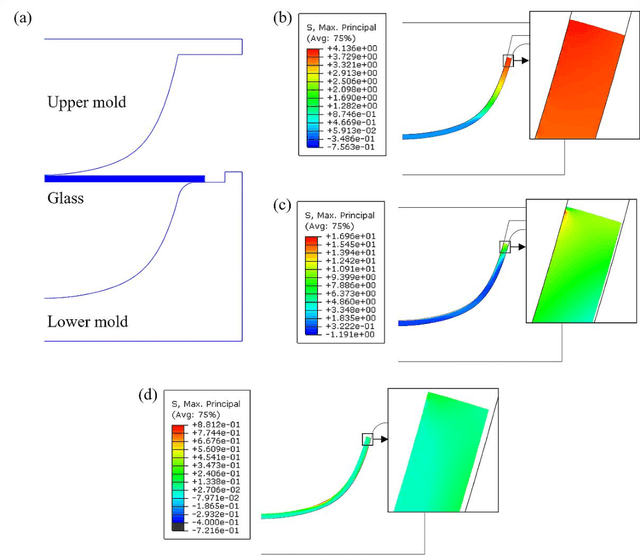
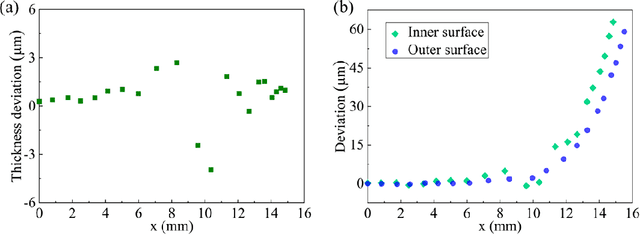
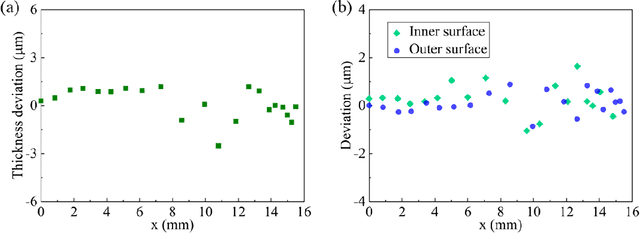
Abstract:Glass with good processability, chemical inertness, and optical transparency has been widely used in optical and aesthetic products, many of which require curve pro-files with high precision. To meet the increasingly tightened geometrical tolerances and fast product updating rates, the traditional approach of developing a thermoform-ing process through trials and errors can cause a large waste of time and resources and often end up with failure. Hence, there is a need to develop an efficient predictive model, replacing the costly simulations or experiments, to assist the design of preci-sion glass thermoforming. In this work, we report a dimensionless back-propagation neural network (BPNN) that can adequately predict the form errors and thus compen-sate for these errors in mold design to achieve precision glass molding. Based on the precision molds, also discussed is the issue of error magnification considering that cover glass for AR/VR glasses or smartphones, with extremely large scale of produc-tion, may require a lower level of mold machining accuracy. It is expected that this BPNN will also be implementable in the glass-manufacturing industry, i.e., trained using industrial data for precision mold designs.
Kuaipedia: a Large-scale Multi-modal Short-video Encyclopedia
Nov 03, 2022Abstract:Online encyclopedias, such as Wikipedia, have been well-developed and researched in the last two decades. One can find any attributes or other information of a wiki item on a wiki page edited by a community of volunteers. However, the traditional text, images and tables can hardly express some aspects of an wiki item. For example, when we talk about ``Shiba Inu'', one may care more about ``How to feed it'' or ``How to train it not to protect its food''. Currently, short-video platforms have become a hallmark in the online world. Whether you're on TikTok, Instagram, Kuaishou, or YouTube Shorts, short-video apps have changed how we consume and create content today. Except for producing short videos for entertainment, we can find more and more authors sharing insightful knowledge widely across all walks of life. These short videos, which we call knowledge videos, can easily express any aspects (e.g. hair or how-to-feed) consumers want to know about an item (e.g. Shiba Inu), and they can be systematically analyzed and organized like an online encyclopedia. In this paper, we propose Kuaipedia, a large-scale multi-modal encyclopedia consisting of items, aspects, and short videos lined to them, which was extracted from billions of videos of Kuaishou (Kwai), a well-known short-video platform in China. We first collected items from multiple sources and mined user-centered aspects from millions of users' queries to build an item-aspect tree. Then we propose a new task called ``multi-modal item-aspect linking'' as an expansion of ``entity linking'' to link short videos into item-aspect pairs and build the whole short-video encyclopedia. Intrinsic evaluations show that our encyclopedia is of large scale and highly accurate. We also conduct sufficient extrinsic experiments to show how Kuaipedia can help fundamental applications such as entity typing and entity linking.
Divide-and-Conquer Large Scale Capacitated Arc Routing Problems with Route Cutting Off Decomposition
Dec 29, 2019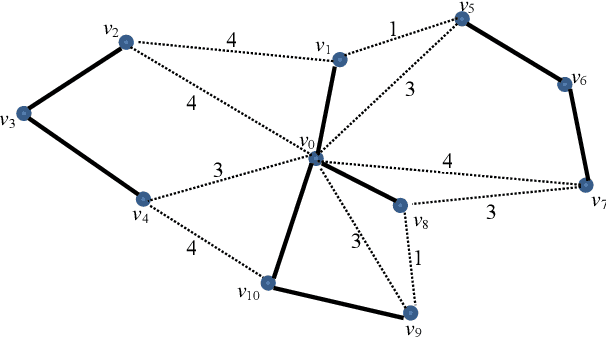

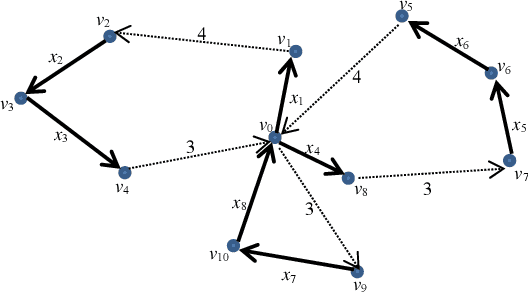
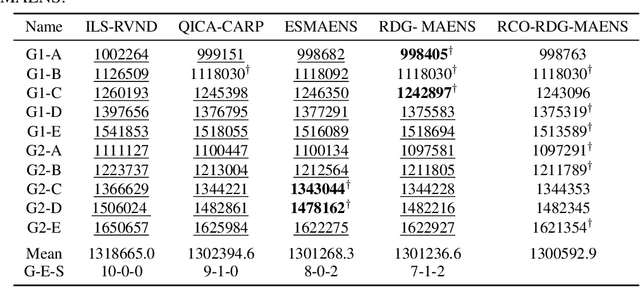
Abstract:The capacitated arc routing problem is a very important problem with many practical applications. This paper focuses on the large scale capacitated arc routing problem. Traditional solution optimization approaches usually fail because of their poor scalability. The divide-and-conquer strategy has achieved great success in solving large scale optimization problems by decomposing the original large problem into smaller sub-problems and solving them separately. For arc routing, a commonly used divide-and-conquer strategy is to divide the tasks into subsets, and then solve the sub-problems induced by the task subsets separately. However, the success of a divide-and-conquer strategy relies on a proper task division, which is non-trivial due to the complex interactions between the tasks. This paper proposes a novel problem decomposition operator, named the route cutting off operator, which considers the interactions between the tasks in a sophisticated way. To examine the effectiveness of the route cutting off operator, we integrate it with two state-of-the-art divide-and-conquer algorithms, and compared with the original counterparts on a wide range of benchmark instances. The results show that the route cutting off operator can improve the effectiveness of the decomposition, and lead to significantly better results especially when the problem size is very large and the time budget is very tight.
Feature Generation by Convolutional Neural Network for Click-Through Rate Prediction
Apr 09, 2019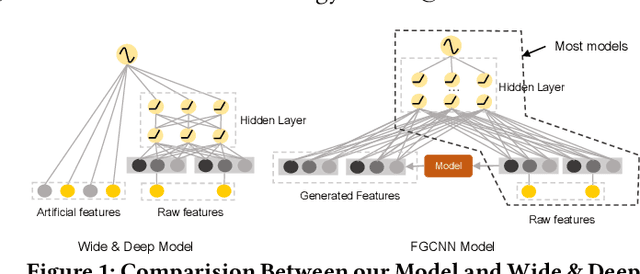
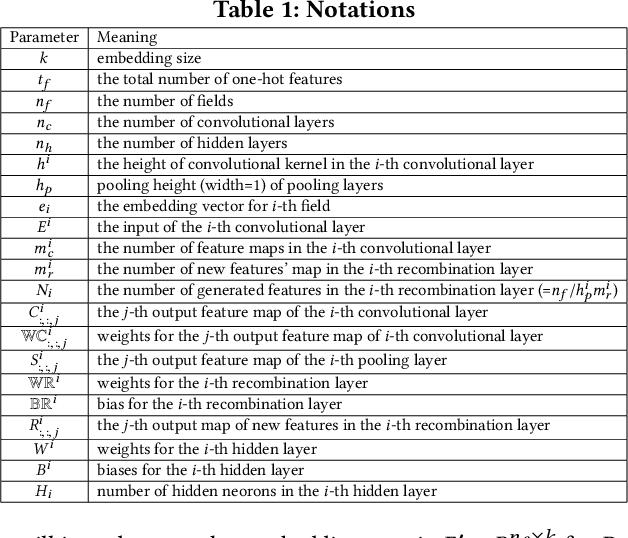
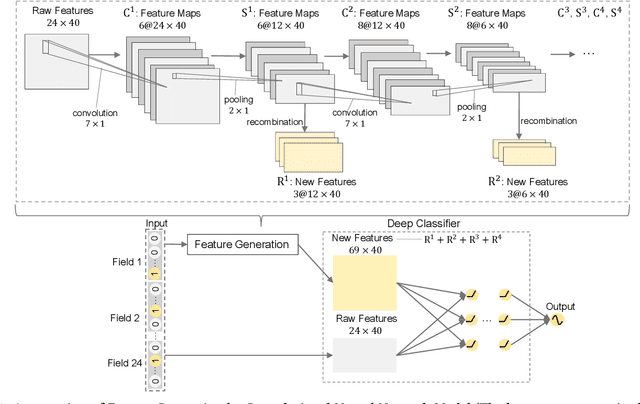

Abstract:Click-Through Rate prediction is an important task in recommender systems, which aims to estimate the probability of a user to click on a given item. Recently, many deep models have been proposed to learn low-order and high-order feature interactions from original features. However, since useful interactions are always sparse, it is difficult for DNN to learn them effectively under a large number of parameters. In real scenarios, artificial features are able to improve the performance of deep models (such as Wide & Deep Learning), but feature engineering is expensive and requires domain knowledge, making it impractical in different scenarios. Therefore, it is necessary to augment feature space automatically. In this paper, We propose a novel Feature Generation by Convolutional Neural Network (FGCNN) model with two components: Feature Generation and Deep Classifier. Feature Generation leverages the strength of CNN to generate local patterns and recombine them to generate new features. Deep Classifier adopts the structure of IPNN to learn interactions from the augmented feature space. Experimental results on three large-scale datasets show that FGCNN significantly outperforms nine state-of-the-art models. Moreover, when applying some state-of-the-art models as Deep Classifier, better performance is always achieved, showing the great compatibility of our FGCNN model. This work explores a novel direction for CTR predictions: it is quite useful to reduce the learning difficulties of DNN by automatically identifying important features.
Large-scale Interactive Recommendation with Tree-structured Policy Gradient
Nov 14, 2018

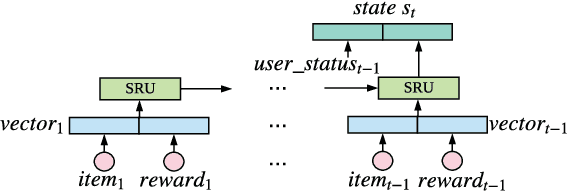
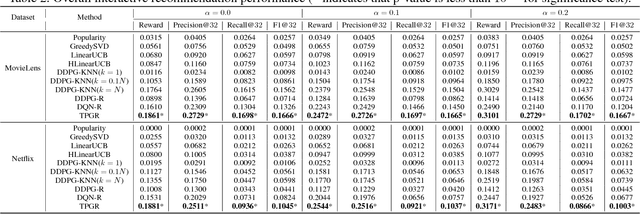
Abstract:Reinforcement learning (RL) has recently been introduced to interactive recommender systems (IRS) because of its nature of learning from dynamic interactions and planning for long-run performance. As IRS is always with thousands of items to recommend (i.e., thousands of actions), most existing RL-based methods, however, fail to handle such a large discrete action space problem and thus become inefficient. The existing work that tries to deal with the large discrete action space problem by utilizing the deep deterministic policy gradient framework suffers from the inconsistency between the continuous action representation (the output of the actor network) and the real discrete action. To avoid such inconsistency and achieve high efficiency and recommendation effectiveness, in this paper, we propose a Tree-structured Policy Gradient Recommendation (TPGR) framework, where a balanced hierarchical clustering tree is built over the items and picking an item is formulated as seeking a path from the root to a certain leaf of the tree. Extensive experiments on carefully-designed environments based on two real-world datasets demonstrate that our model provides superior recommendation performance and significant efficiency improvement over state-of-the-art methods.
 Add to Chrome
Add to Chrome Add to Firefox
Add to Firefox Add to Edge
Add to Edge